#princess zorka of montenegro
Explore tagged Tumblr posts
Text

OTMAA Contemporaries: The Italian Royal Family.
From left: Yolanda (1901) with Maria Francesca (1914), Umberto (1904), Mafalda (1902) and Giovanna (1907). Like OTMAA, there were four sisters and only one brother; but in this case, the brother was the middle child. This generation of Italian royalty did have some Romanov connections, as their mother, Queen Elena, was born a princess of Montenegro, and her sisters Militza and Anastasia had married into the Romanov family. Therefor the young Italian royals were first cousins of Roman Petrovich and his sisters Marina and Nadejda. Another aunt, Zorka, had married into the Serbian royal family, and the Italians also counted King Alexander of Serbia/Yugoslavia and his sister, Elena Petrovna, who married Prince Ioann Konstantinovich, among their cousins.
#otmaa contemporaries#italian royal family#yolanda of savoy#mafalda of savoy#umberto ii#giovanna of savoy#maria francesca of savoy#press photo#my collection
21 notes
·
View notes
Text

Princess Zorka Karađorđević (23 December [O.S. 11 December] 1864 – 16 March [O.S. 4 March] 1890), born Princess Ljubica of Montenegro, was the eldest child of Prince Nicholas I and Princess Milena of Montenegro, who later became the country's king and queen consort. In 1883, Ljubica married Prince Peter Karađorđević and she changed her name to Zorka (and her surname to Karađorđević). She died in childbirth while giving birth to Prince Andrija on 16 March 1890. Prince Andrija died shortly thereafter. Zorka's husband later became king of Serbia as Peter I.
#Zorka of Montenegro#House Petrović-Njegoš#xix century#women in history#photo#photography#black and white
3 notes
·
View notes
Text
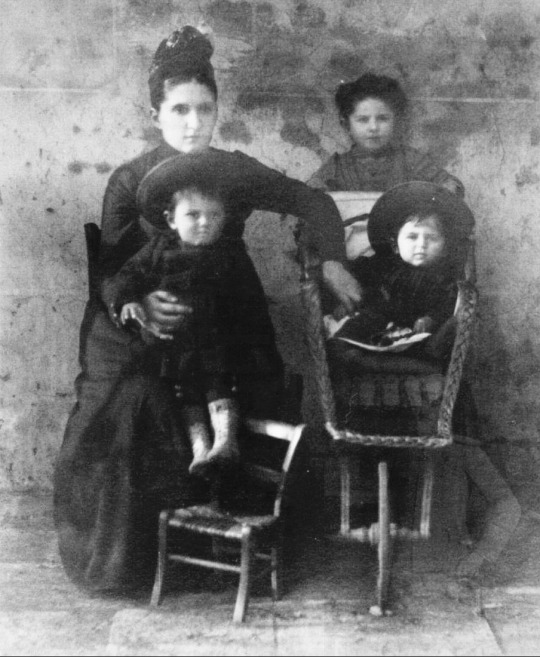
Rare photo
Princess Zorka of Serbia with her children, Princess Helen, Crown Prince George and Prince Alexander (future King of Yugoslavia), 1889.
#princess zorka of montenegro#Ljubica Petrović-Njegoš#princess helen of serbia#crown prince george of serbia#king alexander i of yugoslavia#prince alexander of serbia#serbian royal family#yugoslavian royal family#1889#1880s#princess zorka of serbia
55 notes
·
View notes
Photo
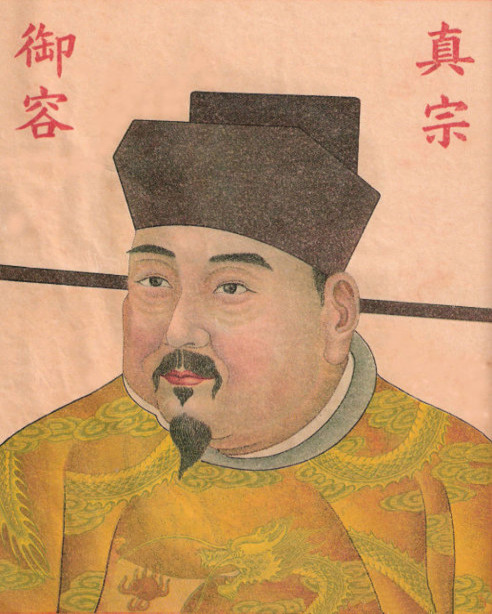
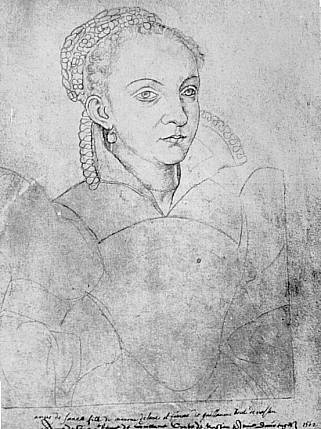

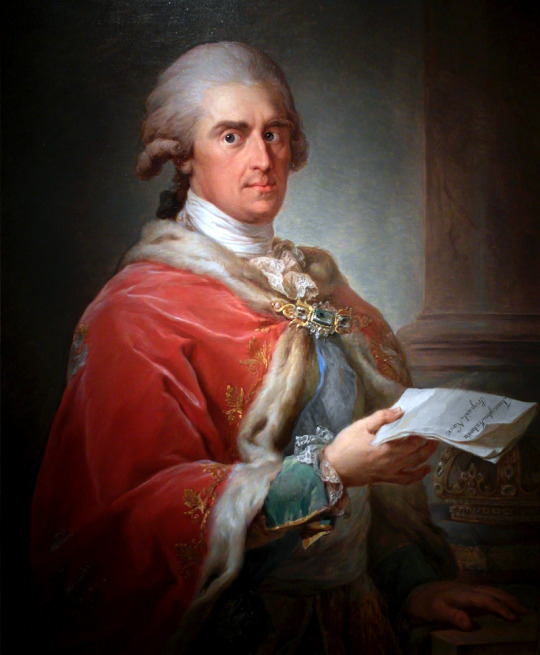



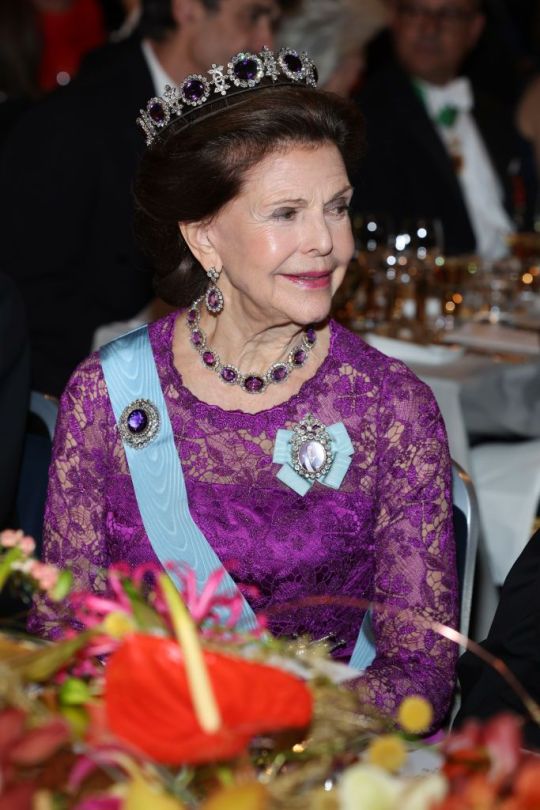


Royal Birthdays for today, December 23rd:
Zhen Zong, Emperor of China, 968
Anna of Saxony, Princess Consort of Orange, 1544
Tianqi Emperor, Emperor of China, 1605
Frederick Augustus I, King of Saxony, 1750
Alexander I, Emperor and Autocrat of All the Russias, 1777
Zorka, Princess of Montenegro, 1864
Akihito, Emperor Emeritus of Japan, 1933
Silvia, Queen of Sweden, 1943
Maria Vladimirovna, Russian Royal, 1953
Ali bin Al Hussein, Prince of Jordan, 1975
#queen silvia#maria vladmirovna#emperor akihito#alexander i#princess zorka#Ali bin Al Hussein#anna of saxony#emperor Zhen Zong#Tianqi Emperor#frederick augustus i#long live the queue#royal birthdays
36 notes
·
View notes
Text

Siblings ~ Prince Alexander of Serbia,Princess Jelena of Serbia,Prince George of Serbia.
Princess Jelena would join the Romanov family by marrying Prince Ioann Konstantinovich Romanov of Russia on 3 September 1911 at the St Peter and Paul Chapel of the Grand Palace at Peterhof.They were introduced by Jelena's aunt,Elena of Montenegro,Queen of Italy.She took the name Princess Elena Petrovna Romanova of Russia upon her marriage.
Princess Jelena was the eldest child and daughter of the future King Peter l of Yugoslavia and King of Serbia and Princess Zorka of Montenegro (née Ljubica).Her mother died when she was five.Her aunts included Princess Anastasia of Montenegro who would later marry the Grand Duke Nikolai Nikolaevich Romanov of Russia (the Younger) and Princess Militsa of Montenegro who would marry Grand Duke Peter Nikolaevich Romanov of Russia.
Jelena was educated at the Smolny Institute in St Petersburg.
She survived the Russian Revolution but sadly her husband,Prince Ioann Konstantinovich was murdered at Alapayevsk on 18 July 1918.
2 notes
·
View notes
Video
youtube
My visit to Royal Palace - Castle of King Nikola, XIX century, Bar, Montenegro More videos: https://www.youtube.com/feed/my_videos Bar Royal Palace is a (former) royal summer residence in Bar, Montenegro. The palace was constructed by king Nikola I Petrović-Njegoš in 1885, and was a gift to his daughter Princess Zorka and his son-in-law, Prince Petar Karađorđević. The complex includes the large and the small palace, a chapel, houses for the guards and a winter garden. A spacious ballroom was added in 1910. At the front of the palace, there was a wooden pier. Between 1866 and 1916, King Nikola owned ten yachts. One of them, Sibil, was bought from Jules Verne, the novelist. The last yacht bought was the Rumija. In 1915, it was sunk in the Bar harbour by the Austro-Hungarian navy. Currently, the palace houses the city museum of Bar. Also, it is used as a venue for festivals, concerts, exhibitions and literary events. The main building of the complex is the so-called Great castle. The building was erected in the spirit of the residential buildings of that time. It has a rectangular base with a facade facing the sea. It consists of ground floor, first floor and attic. There were wine cellars in the country on both sides of the Great Castle, and there are still living witnesses to the existence of an underground tunnel that connected the cellar with the watchtowers. Whether these were drainage drains, or a secret passage such as many medieval fortifications have, cannot be said without archaeological research. At the corners of the fence wall of the Great Castle, towards the sea, there is a six-sided watchtower with broken arched windows. The winter garden, a gift from the Italian king Vittorio Emanuel, leans on the northeast side of the palace park. The building is built of glazed metal construction with decorative details in the form of Art Nouveau, and is the only such monument in Montenegro. The premises of the palace are used to host the local museum of local lore, they also hold literary readings, exhibition displays, arrange music concerts and festivals. DAGUE DESTROER EXHIBITION: Dague was one of a dozen Bouclier-class destroyers built for the French Navy in the first decade of the 20th century. During World War I, Dague struck a mine at Bar, Montenegro, on 24 February 1915 and sank with the loss of 38 of her crew. The exhibition presents items from a sunken ship raised from the seabed.
#hello#likes#like#likeme#travel#followme#interesting#subscribe#nicholas#nikola#king#montenegro#bar montenegro#europe#adventures#royaty#traveler#trip#culture#muse update#exhibitionbooth#ship#ships#museums#mountains
2 notes
·
View notes
Photo

Princesses Zorka, Militsa and Anastasia of Montenegro. Militsa and Anastasia both married into the Romanov family and were responsible for introducing Grigoriy Rasputin to the the last Emperor and Empress.
105 notes
·
View notes
Text
Zora
Duchess Ljubica-Zorka Karađorđević (Cetinje, 23 of December 1864 – Cetinje, 15th of March 1912) was the daughter of Montenegro duke (later king) Nikola I Petrović Njegoš and duchess Milena, wife of king Petar I Karađorđević and mother of king Aleksandar I Karađorđević.
Biography
Zorka is the eldest of the twelve children of montenegro duke Nikola I Petrović Njegoš. She spent her childhood on Cetinje and attended school until she was eleven. She was taught by teachers from Cetinje and swiss teacher Mrs. Nikom, but she also attended a girl’s school Carica Marija on Cetinje. After that, she continued her education for seven years in the insitute „Smoljna“ in Sankt-Petersburg in Russia where russian emperor provided education for her and her sisters using his own money, and they were given a treatment offered exclusively to royal children. Princesses received special apartments, separate dining room, clearance to attend court celebrations and using court carriages, expensive toilettes. When she was 19 years old, she got married to duke Petar Mrkonjić Karađorđević (the grandson of king Karađorđević) who was 20 years older than her. Wedding was done on 30th of July in 1883 after which the married couple took up residence on Cetinje (because Karađorđević family were forbidden from entering Serbia at that time) and later they moved to Bar where they build a new residence and named in Topolica after Petar’s birthplace Topola in Serbia. The duchess becomes very proactive in plans to make her husband the king of Serbia.
Zorka gave birth to five children: Jelena, Milena, Đorđe, Aleksandar and Andrija. The duchess died two days after giving birth to fifth child and Andrija died 20 days later. The duchess Zorka never saw Serbia. She was buried on Cetinje near the monastery of Saint Petar. When Oplenac, foundation of king Petar, was built, the remains of her body were transferred from Cetinje and laid into the first tomb next to the altar apse.
Zorka in poetry
Many poets had written poems about important moments in her life, such as her birth, christening, wedding, illness, death and the transferring of the body. Jovan Sundečić has written a poem to honour the birth of duchess Zorka. He also wrote a poem to honour her christening during which her godfather was the Serbian ruler at the time, duke Mihailo Obrenović. A song under the title of „Happy moment of christening of the duchess Ljubica Zorka Petrović Njegoš on the day of Saint Sava serbian in 1865“ was published in Montenegro yearbook „Little eagle“ in 1866. A longer poem in decasyllable, titled „Marriage of duke Petar Karađorđević and duchess Ljubica Zorka“ which was written by Đuro Petrović, was saved in its entirety. „At the foot of Lovćen that wide epic intimacy of the entirety on nation’s people came together. People sang and the hills around Cetinje answered their song.“ – wrote the chronicler of wedding celebration and duke Nikola gave the blessing to everyone with a poem. According to the account made by Đura Petrović, duke Petar Karađorđević gave an answer to the blessing of his son-in-law, duke Nikola with another poem. It is assumed that duke Nikola wrote the poem about his daughter’s illness. This poem was sung by many: Ksenija Cicvarić, Mirko Rondović, Branka Šćepanović, Merima Njegomir, Ana Bekuta and Tanja Šeter. Jovan Sundečić also wrote an elegy about death of duchess Zorka. Radoje Roganović also wrote an elegy about her death, which was published in Cetinjski vjesnik on 14th of March in 1912. Many other writers wrote poetry about her, such as Jovan Lipovac, Flip Kovačević and others.
Monument
First monument for a woman in Serbia was built for duchess Zorka on 3rd of June in 1926. The monument, a work of a sculptor Stamenko Đurđević, was built by „Duchess Zorka“ society. The monument lay on the Big Kalemegdan. The monument was removed and probably destroyed after World War 2. The gypsum model of first version remained and is being kept in History museum of Serbia.
Street
One of the smallest streets on the outskirts of Čukarica, Zora’s street also exists in Vrčin, Kanjiža and Lugavčina. Duchess Zorka got a street on Vračar which was called „Zorina street“ by the people. After World War 2, the name of the street was changed into the street of Ivan Milanović. After 50 years, the name of Duchess Zorka was restored. The street of Duchess Zorka exists in Belgrade in municipalities Vračar and Kaluđerica, in Šabac and Topola.
Literature
Sekulic, N. (2014). Birth aspects of public urbane area (based on the example of the analysis of Belgrade street names). Sociology, 56(2), 125-144.
Outside links
Duchess Zorka Karađorđević, Mira Sofronijević
https://www.rastko.rs/istorija/zaduzbinari/msofronijevic2003/msofronijevic-zorka.html
http://plavazvijezda.com/svitanje-rujne-zore-zorka-petrovic-karadordevic-122-godine-od-njene-smrti/
http://www.politika.rs/sr/clanak/260773/Beograd/Potraga-za-izgubljenim-skulpturama-sa-Beogradske-tvrdave
http://www.montenegrina.net/pages/pages1/istorija/cg_u_xix_vijeku/nikola1/zorna_zorka_zivot_i_smrt_najstarije_kcerke_knjaza_mikole_m_jovicevic.html
http://www.montenegrina.net/pages/pages1/istorija/cg_u_xix_vijeku/nikola1/crnogorske_princeze_evropske_diplomate_snezana_sekulic.html
https://www.youtube.com/watch?v=EDFtVmVM92g
https://www.youtube.com/watch?v=7Ajw4M_BjvU
0 notes
Photo

My drawing of Princess Milica of Montenegro Princess Milica of Montenegro was the daughter of King Nicholas I of Petrovic-Njegos and his wife Queen Milena. She and her younger sister Anastasia married into the Russian Royal Family by marrying Russian Grand Dukes,her sister Elena became Queen of Italy, her sister Zorka became Princess of Serbia, and her sister Anna became Princess of Battenberg House of Petrovic-Njegos 1/?
#milica of montenegro#militza of montenegro#grand duchess#romanov#holstein gottorp romanov#petrovic njegos
0 notes
Text

Princess Zorka of Serbia, 1880s.
#princess zorka of montenegro#princess zorka of serbia#serbian royal family#yugoslavian royal#montenegro#1880s
36 notes
·
View notes
Text

Princess Zorka of Serbia née Montenegro, 1880s.
#princess zorka of montenegro#princess zorka of serbia#serbian royal family#yugoslavian royal family#1880s#montenegro
13 notes
·
View notes
Text

Zorka Karađorđević née Princess Zorka of Montenegro, c. 1883
Artist: Š. Bocaric
Oil on canvas, 119 x 70 cm
Source: National Museum in Belgrade, obtained from confiscated paintings, 1951.
#princess zorka of montenegro#Zorka Karađorđević#Ljubica Petrović-Njegoš#montenegro#serbian royal family#1883#1880s#painting#princess zorka of serbia#Petrović-Njegoš
57 notes
·
View notes
Text

Princess Zorka of Montenegro (1864-1890).
She was the mother of Princess Helen of Serbia and King Alexander I of Yugoslavia.
Image: Palumba.info
Please don't remove the watermark.
#princess zorka of montenegro#princess zorka of serbia#Petrović-Njegoš#Ljubica Petrović-Njegoš#montenegro#serbian royal#serbian royalty#serbian royal family#yugoslavian royalty#yugoslavia
30 notes
·
View notes
Text

Rare photo of Ljubica Petrović-Njegoš Princess of Montenegro, future Princess Zorka Karađorđević (1864-1890), sitting on a horse in Cetinje. Early 1880s.
In 1883, she married prince Peter Karađorđević. She died in childbirth while giving birth to Prince Andrija on 16 March 1890. Prince Andrija died shortly thereafter.
Her husband Prince Peter went on to become King of Serbia in 1903, thirteen years after her death.
#princess zorka of serbia#princess zorka of montenegro#Zorka Karađorđević#Karađorđević#Ljubica Petrović-Njegoš#montenegro#early 1880s#serbian royal#serbian royalty#serbian royal family
46 notes
·
View notes
Text





Princess Zorka of Serbia née Montenegro, c. 1883.
Mother of King Alexander I of Yugoslavia and Princess Jelena Petrovna of Russia.
31 notes
·
View notes
Text
Royal Wedding on 8 June 1922 in Belgrade (part 1).
King Alexander I of Serbia (33) and Princess Maria of Romania (22).
The bridegroom was the youngest child of King Peter I of Serbia and his wife Princess Zorka of Montenegro who sadly passed away when Alexander was only one year and three months old.


The bride was the second born daughter of King Ferdinand I of Romania and his wife, Princess Marie of Edinburgh.
The bride arriving for her wedding, her father and bridesmaids are welcoming her.
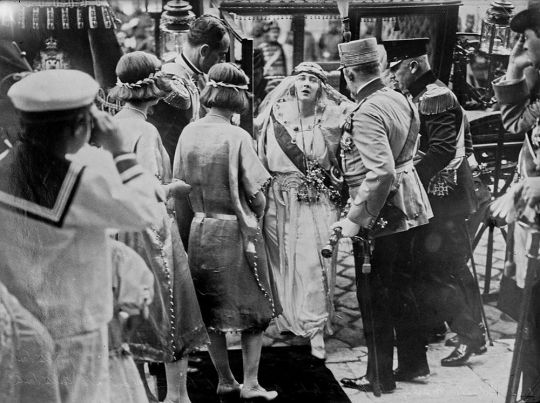
The wedding ceremony


The bride with her sister and first cousin.
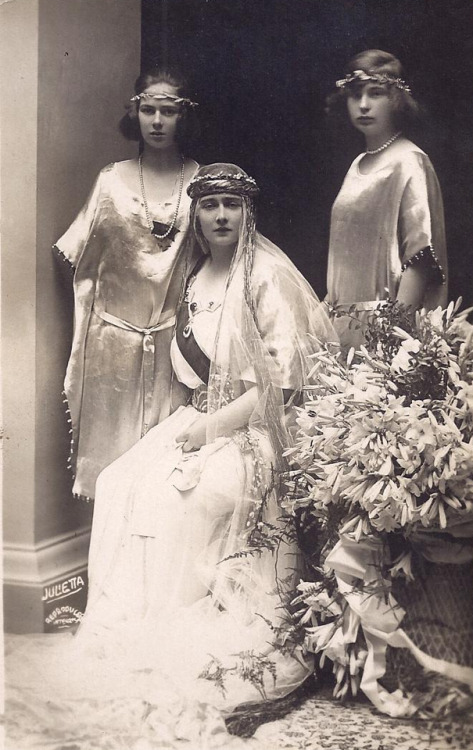
The lavish royal wedding to Princess Maria of Romania was intended to cement the alliance with Romania, a fellow "victor nation" in World War I which like Yugoslavia had territorial disputes with the defeated nations like Hungary and Bulgaria. For Alexander, the royal wedding was especially satisfactory as most of the royal families of Europe attended, which showed that the House of Karađorđević, a family of peasant origins who were disliked for slaughtering the rival House of Obrenović in 1903, were finally accepted by the rest of European royalty.

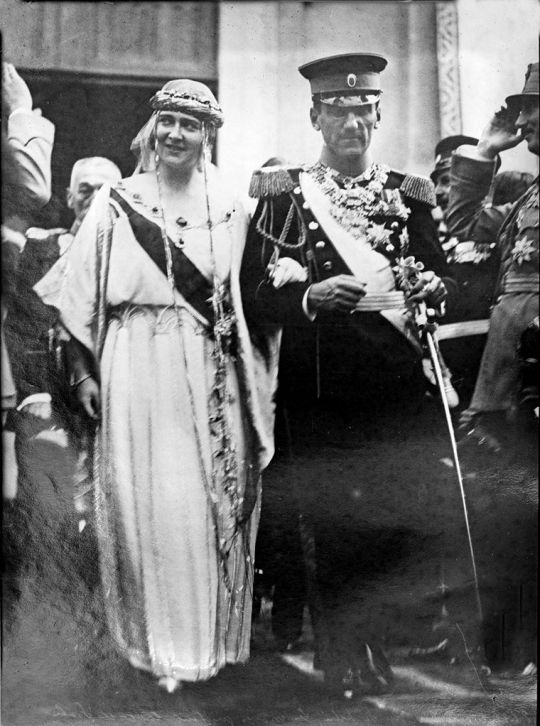


#queen marie of romania#king ferdinand i of romania#king alexander i of yugoslavia#princess maria of romania#queen maria of yugoslavia#princess ileana of romania#princess kira kirillovna of russia#1922#1920s#royal weddings#prince arsen of serbia#yugoslavian royal family
42 notes
·
View notes